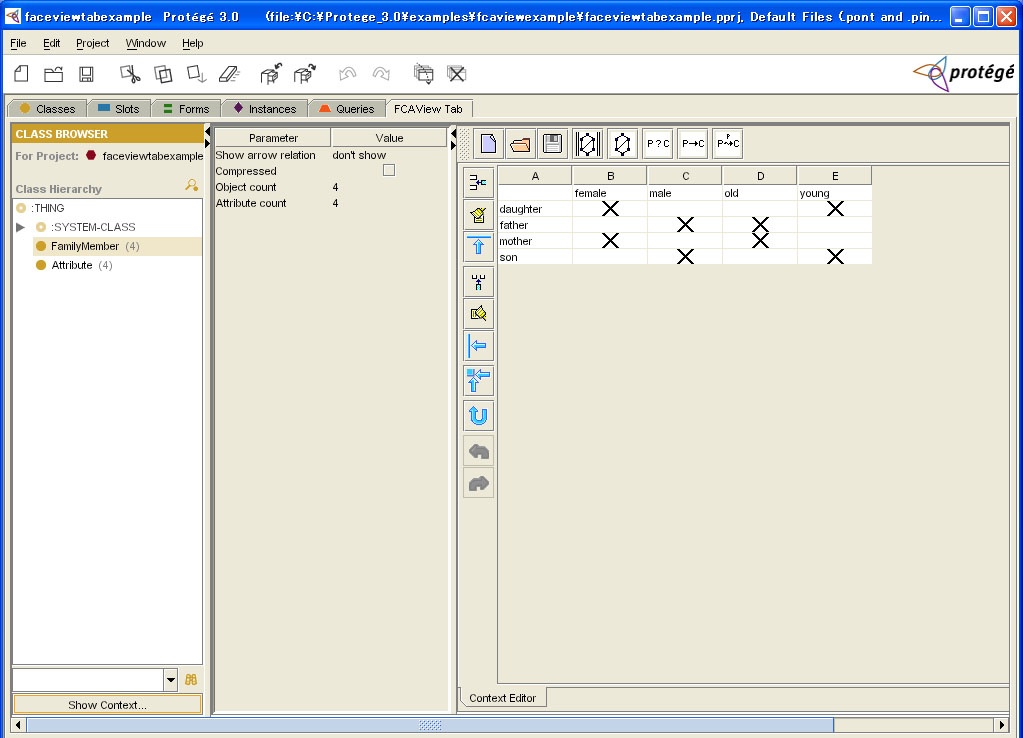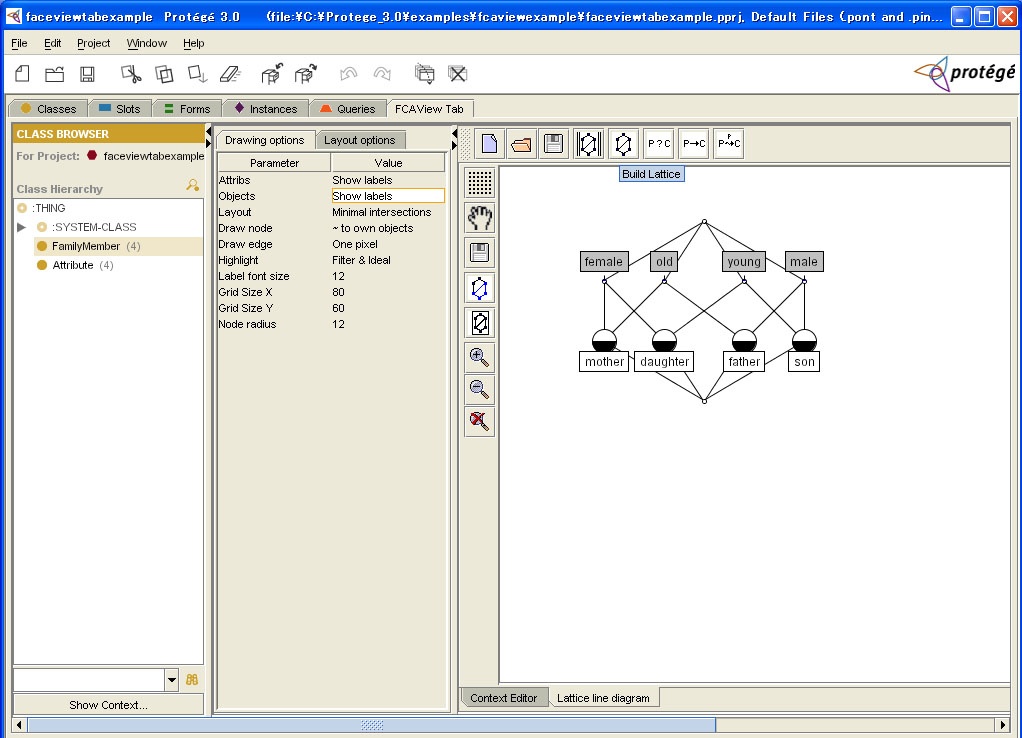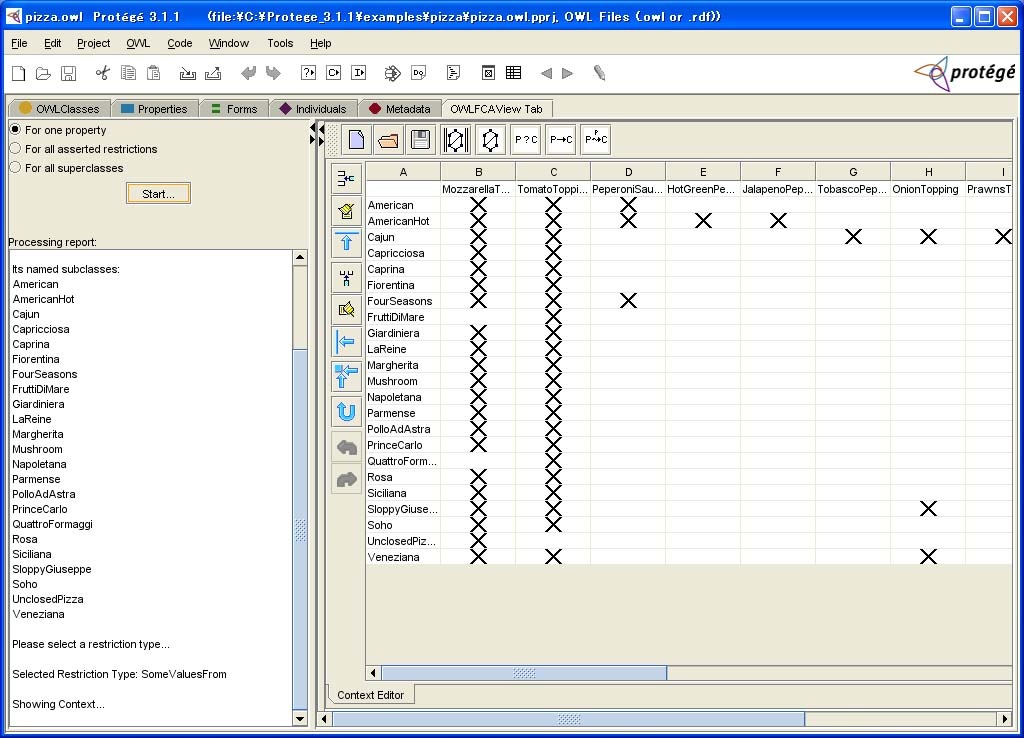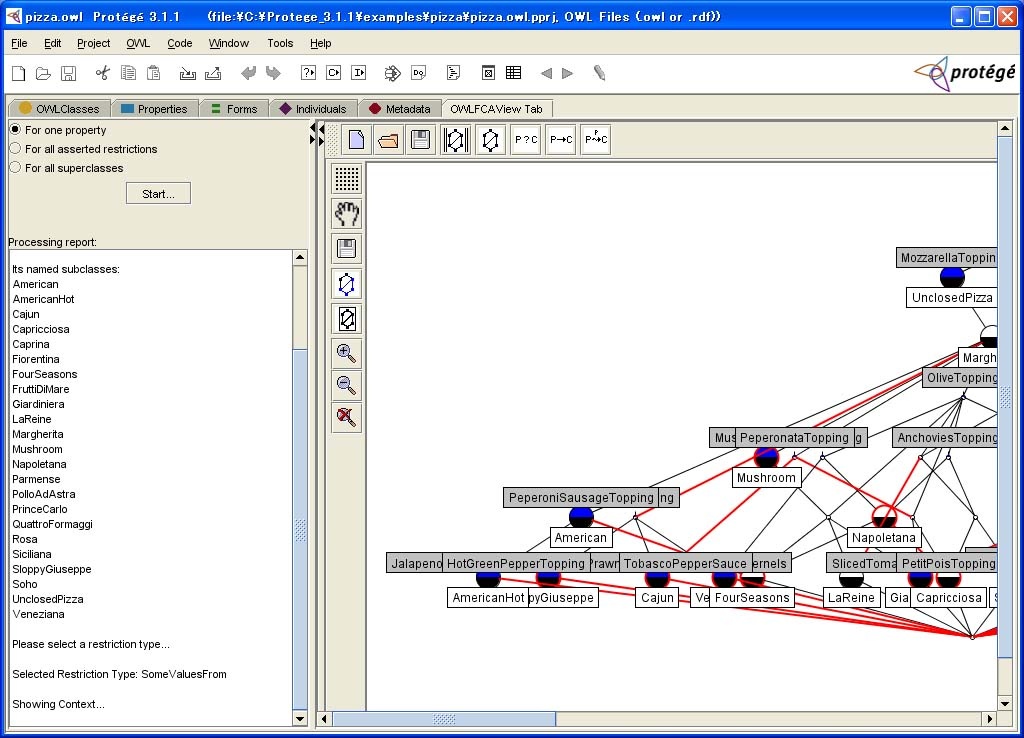FCAView Protégé Tab Plug-in
Introduction
FCAView Tab plug-in provides Protégé users a novel way to visualize their ontologies using the formal concept analysis (FCA) technique.
FCA, a mathematical approach to data analysis based on lattice theory, has been advocated to support ontology building in several studies. Generally speaking, there are three elements to form a formal context: a set of formal objects, a set of formal attributes and the binary relations between them. The formal context is usually formed using a cross table, and graphically it also can be visualized using a lattice diagram. The two ways contain the same information about the formal context.
In the FCAView Tab, we hooked the protégé-2000 with an open source software Concept Explorer version 1.2. We developed two versions of visualization tools as follows.
FCAView Tab for core Protégé ontology
In the FCAView Tab, we assume that the instances (i.e. the formal objects) of a class in protégé-2000, together with its own slots (i.e. the formal attributes), could form a formal context that would interests the users. In particular, two kinds of formal context can be formed: 1) the instances of a class with its slots in Boolean type; 2) the instances of a class with its slots in Multiple Instance type.
OWLFCAView Tab for Protégé OWL ontology
In the OWLFCAView Tab, we developed a property-oriented way for visualization of OWL ontology in Protégé-2000. There are three basic specifications implemented in current version of our tool. The first perspective focused on one of the properties in a selected set of the classes. Here, the selected set of the classes was used as the formal objects and the fillers of the restriction of the selected property were used as the formal attributes. The second perspective focused on all asserted restrictions in a selected set of the classes. Here, the selected set of the classes was used as the formal concepts and the fillers of all asserted restrictions defined for the classes were used as the formal attributes. The third persepctive focused on all super-classes of a selected set of the classes. Here, the selected set of the classes was used as the formal objects and the super-classes of each class were used as the formal attributes.
Downloads
The FCAView Tab plug-in (Ver 1.0) can be downloaded. Last updated: May 12, 2006.
The OWLFCAView Tab plug-in (Ver 1.1) can be downloaded. Last updated: May 12, 2006.
Documentation
The FCAView Tab plug-in is only compiled for protégé-3.0. A manual is provided and an example project can be downloaded.
The OWLFCAView Tab plug-in is only compiled for protégé-3.1. A manual is provided.
Level of Support
The FCAView Tab plug-in is developed and maintained by Guoqian Jiang. We would like to obtain any comments and advice from you.
Any questions about the tab, please contact to: Guoqian Jiang or Harold R. Solbrig, Division of Biomedical Informatics, Mayo Clinic, Rochester, MN.
License
The FCAView Tab plug-in will become open source soon.
References
Jiang G, et al. Context-based ontology building support for clinical domains using formal concept analysis. Int J Med Inform. 2003 Aug;71(1):71-81. (PubMed citation)
Jiang G, et al. Concept-oriented view generation for clinical data using formal concept analysis. Proceedings of JCMI2004,Nagoya, Japan, November, 2004.
Jiang G, et al. FCAViewTab: A concept-oriented view generation tool for clinical data using formal concept analysis. Proceedings of the 8th International Protégé Conference, Madrid, Spain, July, 2005. (abstract) (slides)
Jiang G, et al. Formalizing the International Classification of Functioning, Disability, and Health (ICF) using Formal Concept Analysis (FCA). AMIA Annu Symp Proc. 2007 Oct 11:994. (PubMed citation)
Jiang G, et al. Auditing the semantic completeness of SNOMED CT using formal concept analysis. J Am Med Inform Assoc. 2009 Jan-Feb;16(1):89-102. Epub 2008 Oct 24.(PubMed citation)
Jiang G, et al. Formalizing ICD coding rules using Formal Concept Analysis. J Biomed Inform. 2009 Feb 21. Epub ahead of print. (PubMed citation)




